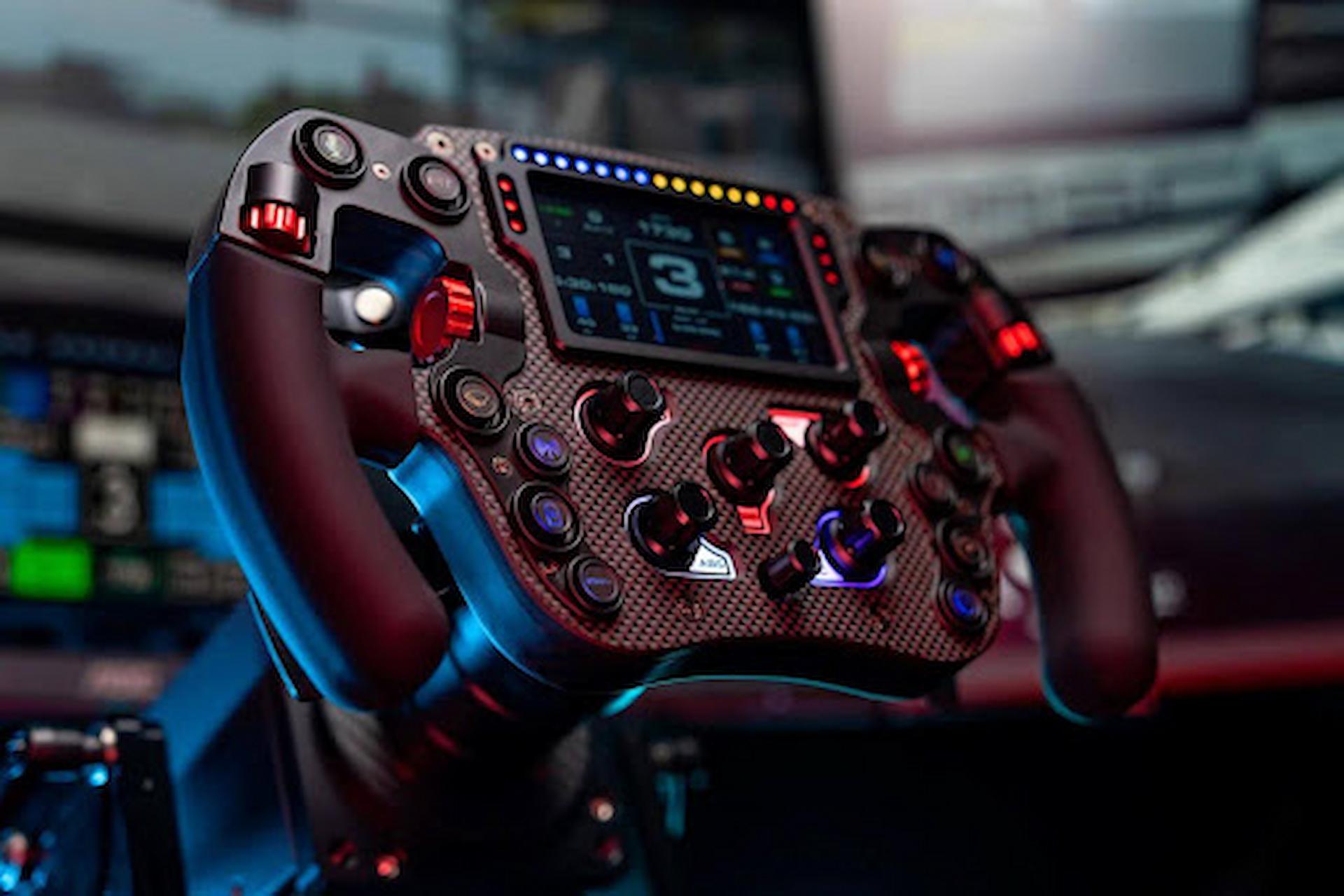Choosing the right sim racing wheel can transform your driving experience from casual fun to professional-grade immersion. With so many features and brands available, knowing what to look for is essential. From force feedback and compatibility to build quality and extra features, this guide explains every detail you need to consider. Whether you’re a beginner or a seasoned racer, these insights will help you invest wisely and unlock a realistic and thrilling racing journey.
Sim racing has grown into a worldwide passion, blending technology with motorsport to give enthusiasts an authentic racing experience. At the heart of this setup lies the racing wheel — a device that can make or break the realism of your simulation. Picking the right wheel involves more than just aesthetics. It’s about performance, compatibility, durability, and personal preference. The Simagic Wheel delivers enhanced control and unparalleled immersion, seamlessly bridging casual gaming with the feel of real motorsport
Force Feedback: The Core of Realism
One of the most critical aspects of any racing wheel is force feedback. This technology uses motors to simulate the feel of the road, the weight of the car, and the impact of every bump or slide. High-quality wheels rely on belt or direct drive systems, offering smoother, firmer, and more accurate feedback compared to gear-driven alternatives. If you want to feel the difference between asphalt and gravel, a robust force feedback system is essential.
Build Quality and Materials
Durability is non-negotiable when it comes to sim racing equipment. Premium wheels are often made of metal alloys, reinforced plastics, or even leather-wrapped rims for extra comfort. A sturdy build ensures your wheel can handle the stress of long races and aggressive driving. Budget options often cut corners on materials, leading to faster wear and tear. Remember, a wheel is a long-term investment in your racing setup, so prioritise solid construction.
Compatibility with Platforms
Before purchasing, confirm that the wheel is compatible with your gaming platform. Some wheels are designed for PC only, while others work seamlessly across PlayStation or Xbox. Always check if firmware updates or drivers are required. Multi-platform compatibility adds flexibility, especially if you race across different ecosystems. For serious PC sim racers, advanced options offer customisation through dedicated software to fine-tune force feedback and sensitivity.
Wheel Size and Rotation
Realism also depends on the size of the wheel and its rotation range. Professional racing wheels typically offer a 900 to 1080-degree rotation, mimicking the turn radius of real cars. Entry-level wheels may only provide 270–360 degrees, limiting immersion. Larger wheels, closer to actual steering wheels in diameter, enhance control and comfort, especially in endurance races. Always match your wheel’s specifications to the racing style you enjoy most.
Pedals and Shifters
The wheel itself is only one part of the experience. Pedal sets and shifters elevate immersion further. Quality pedals with progressive resistance simulate real braking pressure, while load-cell brakes provide unmatched realism. Similarly, a manual or sequential shifter can replicate the thrill of fundamental gear changes. Many brands sell bundles, but investing in standalone premium pedals or shifters often delivers a superior upgrade path.
Direct Drive vs. Belt Drive
A major decision for advanced racers is choosing between belt drive and direct drive wheels. Belt-driven systems use belts and pulleys to deliver smooth force feedback. They are quieter and more affordable. Direct drive wheels, on the other hand, connect the steering shaft directly to powerful motors, providing unmatched strength, precision, and durability. Though more expensive, direct drive is considered the gold standard for professional-grade sim racing setups.
Customisation and Upgradability
The ability to upgrade and customise your wheel is a big advantage. Many manufacturers offer interchangeable rims, modular components, and advanced tuning software. This flexibility allows you to tailor your setup for different racing disciplines, from rally to Formula 1. If you want long-term value, look for systems that support modular upgrades instead of locking you into a single configuration.
Mid-Content Example: Simagic Wheel
When exploring high-quality options, the simagic wheel stands out as a versatile choice for both enthusiasts and professionals. Known for its precision engineering, smooth direct drive technology, and modular design, it offers an excellent balance of power and adaptability. With multiple rim styles, advanced force feedback, and broad compatibility, Simagic has gained popularity in the competitive sim racing community. It’s an example of how cutting-edge technology and craftsmanship come together to deliver peak realism.
Ergonomics and Comfort
Comfort plays a bigger role than many realise. Long racing sessions demand ergonomic designs with well-placed buttons, grips, and responsive paddle shifters. Poor ergonomics can lead to fatigue, reducing both performance and enjoyment. Premium wheels are designed with professional drivers in mind, offering layouts that mimic real cockpits. Ensure the design matches your hand size, grip style, and racing preferences for maximum comfort.
Price vs. Performance
Budget is always a consideration, but the cheapest option rarely delivers the best experience. While entry-level wheels can introduce you to sim racing, they often lack the realism and durability of higher-end models. Consider your goals: if you’re racing casually, mid-range wheels might be enough. For competitive or league racing, investing in premium options ensures consistency, longevity, and immersion.
Additional Features to Look For
Modern racing wheels come with a host of features designed to enhance gameplay. Some of these include:
- LED indicators for RPM and gear shifts.
- Adjustable resistance to customise steering feel.
- Quick-release systems for swapping rims easily.
- Programmable buttons and dials for fine-tuned control.
While these extras aren’t essential, they can elevate your overall experience and provide convenience during intense races.
Choosing the Right Brand
Not all brands are created equal. Established manufacturers like Fanatec, Logitech, Thrustmaster, and Simagic are trusted for quality and innovation. Research reviews, compare specifications, and consider after-sales support before deciding. A good warranty and reliable customer service can save you from costly frustrations later.
Final Thoughts
A sim racing wheel is more than just hardware — it’s the gateway to an immersive motorsport experience. When choosing, focus on force feedback, build quality, compatibility, and upgrade potential. Consider how direct drive compares to belt drive, whether you need modular customisation, and which brand aligns with your goals. By balancing budget and performance, you’ll find a wheel that doesn’t just play the game but makes you feel like you’re truly on the track.



